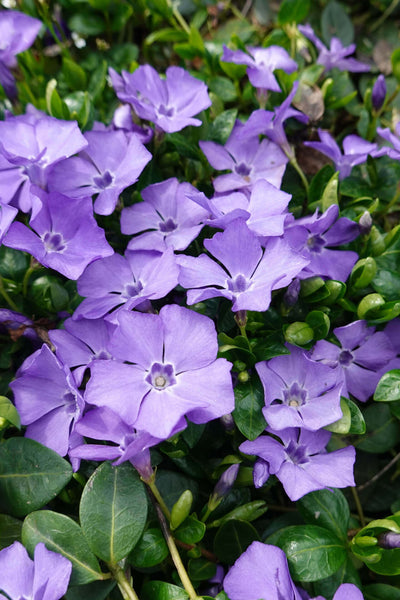If you ask anyone, most first impressions of topiaries would be a sprawling maze garden within a castle or a manor. But while true, one can find topiaries even in a suburban neighborhood or mini-sculptures in urban parks. Topiaries have become trending once more due to the variety of forms and figures they offer, ranging from classically geometrical to whimsical and out-of-this-world. Because of the cost and the delicate, elaborate, and time-consuming process, it is no wonder that topiaries are usually associated with wealthy, urban environments. But of course, where is gardening fun without the challenge of having your own miniature version of a topiary?

Topiary is the practice of clipping the foliage and twigs of perennial trees and shrubs to define geometric or elaborately sculpted shapes. Topiary gardening goes back to the first century when a friend of Roman emperor Augustus invented it. Gardeners practiced it onward as it evolved into pruning, training, and trimming of the foliage. As of now, Levens Hall in Cumbria, England, is the world's oldest still-standing topiary garden, dating back to 1694 during the reign of King James II. Originally planned and laid out by 17th-century gardener Guillaume Beaumont, Levens boasts around a hundred topiary pieces. Topiary was revived in English gardening around the 1840s, paralleling the "Jacobethan" architectural style; the topiary trend exploded all over England with inspiration from the Elvaston Castle, Derbyshire, when it opened for public viewing in the 1850s. The topiary mania would soon continue to grow by the century, even as Walt Disney introduced portable-style topiary to Disneyland around 1962.
Traditional topiary usually acts as the main focus in a garden setting. You can also use topiary to highlight other features, like the base of a wooden pergola or a water fountain. You can design topiaries in a border setting as half standards placed at intervals throughout the length of a gardening scheme to add permanent height and structure, further enhancing the naturalized planting. If one wants to add aesthetic interest to a plain-looking area, classic figures such as cones, balls, or even spirals can work as bold punctuation points at the corners of a scheme. Even a traditional pathway can work as an eye-catcher and focal point for the front entrance of a property, so as long as one uses a matching pair of specimens.
The only catch, if you are into topiary gardening, would not just be the expensive cost. Topiaries, especially with plants like boxwood, are not in any way maintenance-free plants—if left unattended for a considerable amount of time, they would grow out of their pruned shape and revert to their natural growth form. Topiaries tend to be expensive to purchase. They require labor and a generously long time to develop; on top of that, the expense comes from the annual maintenance that one must perform to keep its appearance from the nursery.

But if you intend to have your green-thumb sculptures, several sturdier alternatives are not as high-maintenance and expensive. For starters, inkberry holly is evergreen and has similar growth habits, leaves, and shaping ability. However, it has a faster growth rate than boxwood and is not susceptible to fungal blights. They prefer an acidic and moist site to boxwoods. If you are more into coniferous plants, then the Eastern Arborvitae has low maintenance, and its growth habit is upright and columnar. Juniper is one of the more prevalent alternatives for boxwood, and it can grow anywhere from six to twenty-five feet tall. Some other honorable mentions go to blueberry bushes, the common ninebark, rhododendron, mosses, or a hedge of "knockout roses."
Being your topiary gardener is one of the best alternatives, too, as it can save you several hundred dollars, give you a reason to learn work ethics, and give you a gardening focal point. Topiaries have varieties, such as vine topiaries or shrub topiaries, and it would do well to choose wisely on what kind of garden display you would like to put up. The first thing you should consider is selecting a topiary's form, as this is a crucial decision on whether you want something like climbing vines to crawl up the form to cover the shape. You can also use shrubs if you're going to be practical. Next, you will have to choose a vining plant or shrub. Some starting choices for a vining plant topiary are the English, periwinkle, or Boston ivy. However, most people choose English ivy for its fast growth and hardiness in various climate conditions. For shrubs, you can use a small, juvenile shrub that easily molds as it grows. The third step—filling the form with sphagnum moss—is optional, though it helps your topiary take on a fuller shape. Shrubs, in this case, do not require a frame or filling up with moss. For the fourth step, you can start by carefully planting the vine around the form; in the case of the shrub, you have to keep it slow and steady, and forming your shape, you should trim off no more than three inches of foliage at most. Pruning, in this case, will encourage a more prominent and bushier growth, especially for larger shrubs. And for the rest of the process, you must continue to maintain the patient routine of adequately trimming and pruning your foliage until such time that you can be able to yield the ideal results.
Though training your plant may seem difficult at first, it is an excellent opportunity for a hands-on course and to understand how a plant may respond to your treatment of it—some may respond quite well, while others may respond poorly. Topiaries require a commitment to art, and growing one is certainly not an easy task, so how much more for an entire lawn? Seeing as they are fun additions that can be only limited to your imagination with however you want them, they require a fair amount of maintenance to develop them to their full potential.
A Guide to the Art of Topiary Cultivation
Topiary has enthralled gardeners and imaginative individuals for several hundred years by transforming live shrubs and trees into decorative shapes. Topiary enables you to convert your garden into a fantasy space where you can shape living plants into whimsical animals, classic geometric designs, and flowing organic sculptures. If you appreciate living sculptures from a distance and want to begin learning topiary yourself, this guide will help you launch your horticultural adventure.
The essential initial action you must take when beginning a topiary is learning about plant growth fundamentals and pruning techniques. Topiary requires manipulation of plant growth patterns to produce dense and bushy leaves. Invest time in understanding the growth responses of shoots, buds, and leaves to pruning and learn how to maintain plant health. The rate at which plants grow and the quality of their growth depend on receiving sufficient sunlight and appropriate watering while living in proper soil conditions. Well-nourished plants are more likely to produce dense foliage with crisp shapes needed for effective topiary design.
A proper topiary specimen selection (typically a shrub or small tree) is essential to ensure long-term success. Choose plants that maintain green leaves throughout the year and exhibit continuous growth patterns. Flexible branches and dense foliage enable trimming without stressing the plant excessively. Choosing plants that match your local climate and soil conditions minimizes maintenance complexity.
Begin shaping your topiary by establishing a clear vision for its ultimate design. Beginners should typically start with classic shapes such as spheres, cones, and spirals. Geometric forms enable you to build pruning skills and refine your cutting accuracy. Detailed animal topiary designs require a metal frame as a structural guide. When you employ a frame for plant shaping, place it around the plant and carefully prune small increments of growth at a time to maintain full coverage.
Next, gather the right tools. Beginning your topiary journey requires a pair of hand shears and sharp pruning scissors. When working with established topiary shapes that have grown larger, hedge shears will speed up the shaping process. All tools require clean and sharp blades to deliver accurate cuts and help stop disease spread. First, remove any dead or damaged branches, then continue gradually pruning around the plant to reduce excess growth step by step. Periodically step back from your freehand shaping work to evaluate symmetry and perform necessary adjustments.
Patience is your greatest ally in topiary. In topiary, you work with a living medium that requires time to heal and fill after pruning, unlike stone sculpture, where you create a form from an inert material. Implement gradual pruning cuts instead of making a large-scale transformation immediately. This method maintains healthy plant growth while enabling you to track your topiary development. Schedule your trimming actions based on growth speed, which requires more frequent pruning during periods of active growth.
Explore different artistic shapes without hesitation. Begin with basic topiary designs to build your skills before moving on to bigger projects. Monitor how each plant species responds because they all exhibit unique growth patterns. Your growing experience will reveal individual shortcuts and techniques that define your distinct topiary style. Through dedicated work combined with attentive care and artistic flair, you can discover topiary learning to be both meditative and rewarding. As you continue to shape these green forms, they will transform your garden into a personal art gallery filled with imaginative living sculpture pieces.


